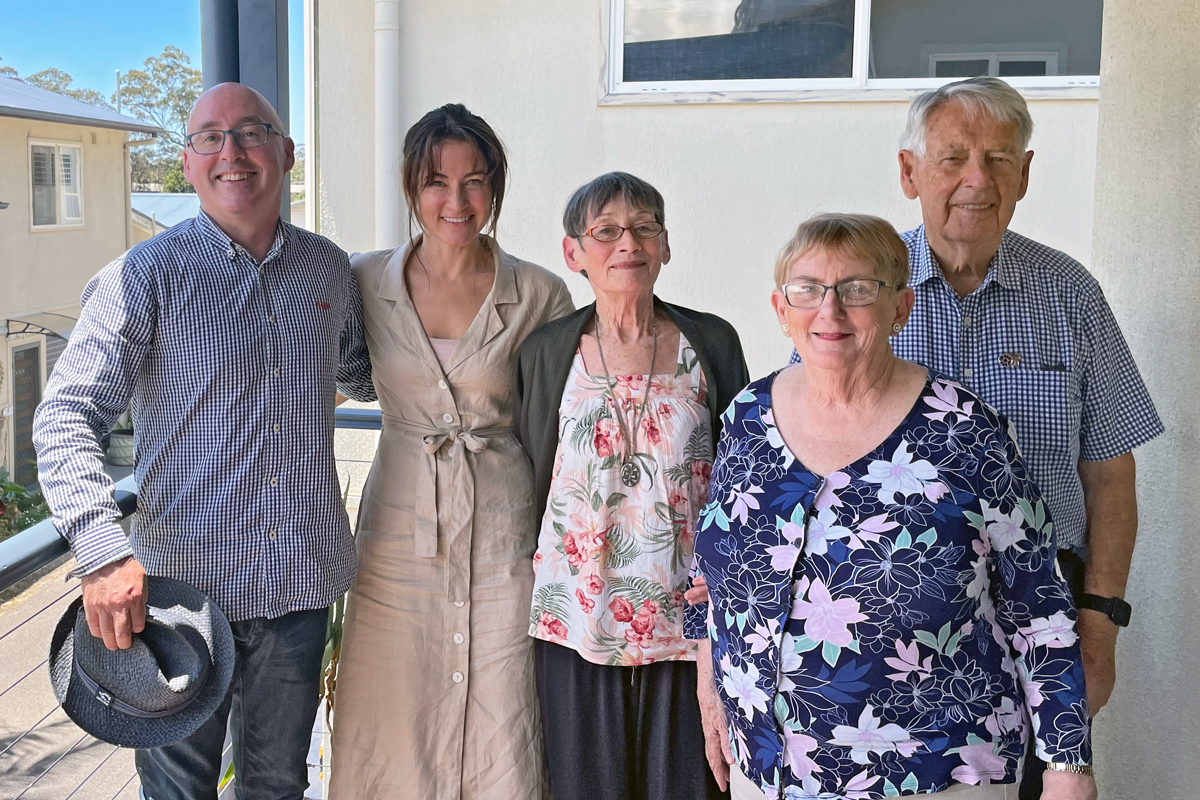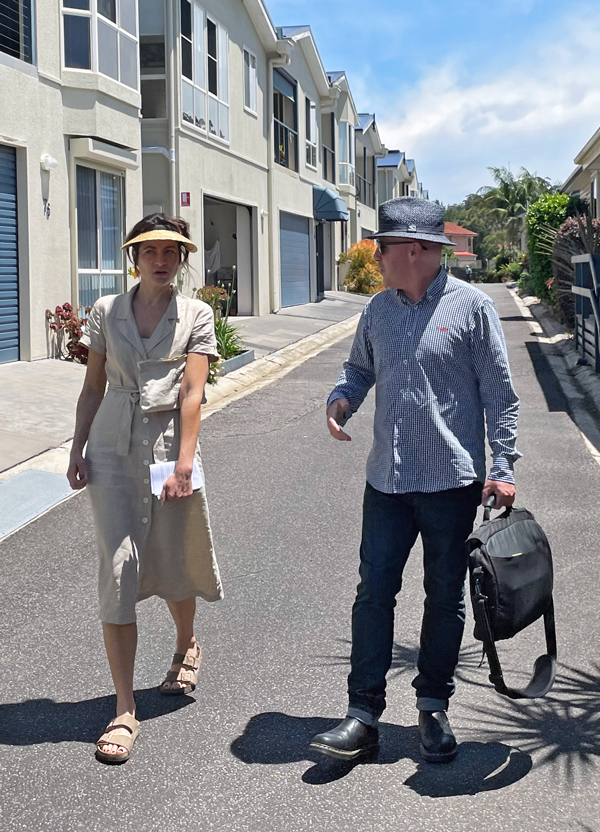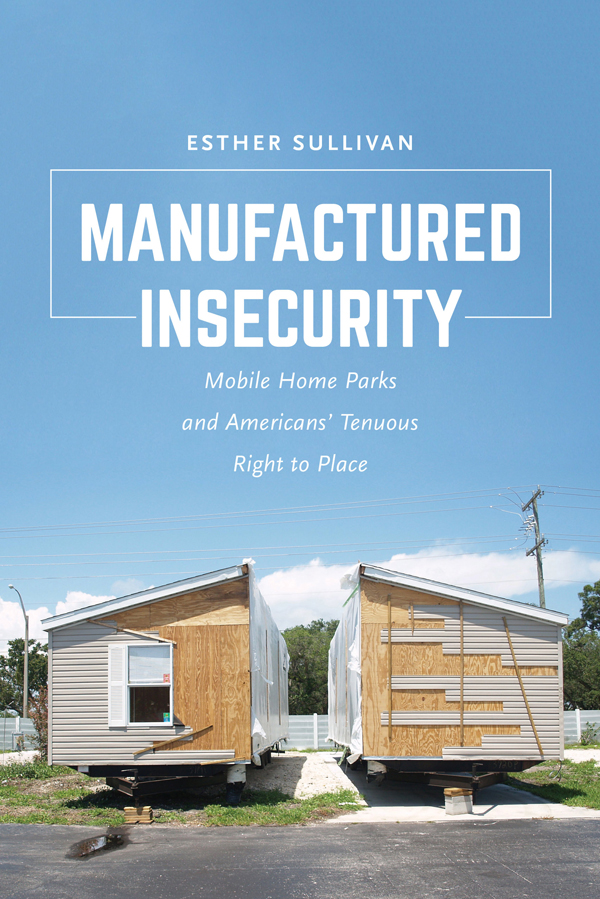Lessons from USA Mobile Home Parks
20/06/2023
By Eloise Parrab, Land Lease Communities Officer at the Tenants' Union of NSW

In the USA, the equivalent of residential land lease communities (RLLCs) are called mobile home parks. In 2022 the number of residents living in mobile home parks in the USA was more than twenty million. As is the case in NSW the majority of residents in these mobile home parks are home owners.
Associate Professor of Sociology at the University of Denver Colorado Esther Sullivan’s book Manufactured Insecurity: Mobile Home Parks and Americans’ Tenuous Right to Place looks at the intersection of social, legal, market and geospatial forces which create housing insecurity for residents in mobile home estates in the USA. Esther spent time living in two mobile home estates that were closing and has written about the impact of the insecurity of this type of housing on the mainly low income residents.

Esther recently visited Sydney at the invitation of the City Futures Research Centre at the University of NSW. The Centre is undertaking a research project From caravans to global capital: the financialisation of older persons’ residential parks, communities and rental villages. In the last 10 years in NSW there has been a rapid increase in the number of RLLCs that are owned by large corporations and companies are making big profits from land lease communities.
This is also the trend in the USA. Senator Elizabeth Warren has been particularly vocal in calling out Wall Street companies that are currently making big profits from mobile home parks and making housing affordability worse for seniors. At a recent US Senate Committee hearing into Affordability and Accessibility: Addressing the Housing needs of America’s Seniors, Senator Warren said:
“Manufactured housing, however, is not just attractive to seniors. A few decades ago, manufactured housing communities were generally owned by mom-and-pop businesses. But as the population aged and our housing has dwindled, the smell of money lured new players: and those are big investors. So private equity firms, hedge funds, other Wall Street giants have scooped up manufactured home communities across the country – including those, like Sandcastle Estates and Liberty Estates in Massachusetts, that cater exclusively to seniors. Institutional investors accounted for nearly one-quarter of manufactured housing park purchases between 2019 and 2021, a 10 percentage-point jump in just two years.”
The characteristics that have made mobile home parks attractive to Wall Street giants are the same characteristics that are attracting large companies to purchase RLLCs in NSW.
As the home owner does not own the land, the companies that buy the communities make their profits from weekly site fees, and increasing site fees means an increase in profits. Residents are in a very difficult position when they are faced with increasing site fees in their community. The cost of moving one’s home can be unaffordable and for some homes impossible and the high site fees make the home less attractive for potential purchasers. Many residents are seniors and for those on fixed incomes in order to pay increasing site fees they need to spend less on basics like food and medication. As well as the prohibitive costs of moving it’s also a big upheaval to sell and can mean moving away from community networks and support.
Investors in the USA have admitted that trapping tenants is one of their investment strategies. Senator Warren during the Senate Committee hearing referred to one online investor “boot camp” for those interested in manufactured housing investments that states, “the fact that tenants can’t afford the $5,000 it costs to move a mobile home keeps revenues stable and makes it easy to raise rents without losing any occupancy.” Esther’s book quotes one of the USA’s largest mobile home park owners summarising his industry’s capacity to make profits in 2014: “We’re like a Waffle house where everyone is chained to the booths.”

During Esther’s visit to Sydney Paul Smyth (Tenants’ Union of NSW Land Lease Communities Solicitor) and I travelled to the Central Coast and met with Esther and residents at two RLLCs. Esther was surprised that many of the homes in the first community looked very permanent and unlike moveable homes she had seen in the USA. We discussed how the level of risk home owners face of having to relocate their homes in RLLCs in NSW due to redevelopment is much lower than in the USA. In many states in the USA, home owners can be given short notice to relocate and no compensation is payable. Therefore residents need to factor this in when building their homes.
Home owners who were around under the old Residential Parks Act will recall that previously home owners who had to relocate their homes in NSW due to redevelopment were entitled to minimal compensation from the operator. RLLC residents and RLLC Forum members Jill Edmonds, Anne Holmes and Jock Plimmer were at the first meeting with Esther. Jill highlighted that parks were being redeveloped in NSW but the global recession (2007-2009) slowed down this development in NSW. The provisions in the Residential Land Lease Communities Act 2013 now also require a home owner to be given 12 months notice if the community is closing or a development application has been lodged and development consent granted by the local council for a change in the use of the land. A home owner is also entitled to far more compensation than under the old Parks Act. To find out more about home owners’ rights see our factsheet at: tenants.org.au/thenoticeboard/factsheet/termination-closure-or-change-use
Jill also discussed how some operators have found a way around the provisions in the current legislation. If the operator is willing to be patient then when homes are put up for sale, as home owners move on, the operator can buy these homes. This also assists in getting development consent from the Local Council as if the homes are vacant the impact of the development on affordable housing is reduced.
Jock highlighted that many large local and overseas investment corporations are now becoming more attracted to buying or building RLLCs than retirement villages. In retirement villages the owner makes their profits at the end when the resident either dies or moves away and pays an exit fee. In RLLC, companies make profit each week by charging site fees and they can include voluntary sharing arrangements in site agreements which means more profit for the operator when a home owner sells their home. There is also less capital required upfront by a RLLC operator as they don’t have to build houses since the home owner owns the home.
The second meeting during our visit to the Central Coast with Esther was with residents from Kincumber Nautical Village. Bob Morris, a resident and member of the RLLC Forum highlighted the issues facing residents in his community. This village is a perfect example of the problem highlighted earlier in the article where increasing site fees are trapping home owners and pushing some residents into housing stress. The site fees in this community are very varied with 25 different site fees in the community. If you’re on a corner site then you pay an extra $5 per week in this community. The site fees have been increasing rapidly and are already well above site fees in other communities on the Central Coast.
In Kincumber Nautical Village there is an old part and a newer part of the community. In the old part of the community there are many vulnerable residents living in older style homes including caravans with an annex. Twenty four of these residents have lived in the community for over 30 years. In the old section they use bottled gas, have old rusty electrical ‘mushrooms,’ no aerials and the internal roads are in very poor condition. In this section of the community, homes generally only sell for $150,000 which means a home owner cannot sell their home and use that money to buy a home in another RLLC. The high site fees in the community also push down the price for home owners selling. Many are reliant on statutory income and have no other source of income and no family support. One single pensioner is currently paying 45% of his total weekly income on site fees and is about to have an increase. A 95-year-old lady who is currently paying 35% with an increase coming has been living in the park for over 30 years. They are trapped as they cannot sell their home and cannot afford unjustified site fee increases.
Just down the road there is another RLLC that has much better communal facilities. They have a heated pool, bowling green, and immaculate gardens. Their facilities could reasonably be described as providing ‘resort- style’ living. The site fees in that village are $190 per week. In contrast, at Kincumber, site fees range from $198 to$318 per week while the tennis courts and swimming pool are in a poor state of repair and crying out for maintenance and improvements. The roads are full of potholes and the gardens are fairly bare. The operator of Kincumber is charging very high site fees and appears to be making big profits as there is little evidence of money being spent on the community.

In the USA it’s not just operators making money from the mobile home industry. The final chapter of Esther’s book is titled Communities as currency within the Mobile Home Empire. In this chapter Esther highlights the many ways big profit is being made from the mobile home empire in the USA, while at the same time it is one of the most devalued forms of housing: “An entire national industry has arisen to extract surplus value out of this otherwise devalued housing form.”
After reading Esther’s book it was a relief to know that RLLC home owners in NSW do have better protections than those living in mobile home parks in the USA. However, as ownership of RLLCs in NSW becomes more concentrated in the hands of large corporations, and in particular companies from the USA, it will be important to ensure we maintain our legislative and consumer protections and work hard to close any loopholes or anomalies that operators may be trying to exploit in our legislation to wring bigger profits from residents.
A link to buy Esther’s book, Manufactured Insecurity, plus links to articles, a video talk, and more, is available on her website: www.esthersullivan.net
This article was published in Outasite magazine issue 9. Outasite is published once or twice annually. Outasite Lite email newsletter is sent several times a year – subscribe here. All past issues are available in the archive.
